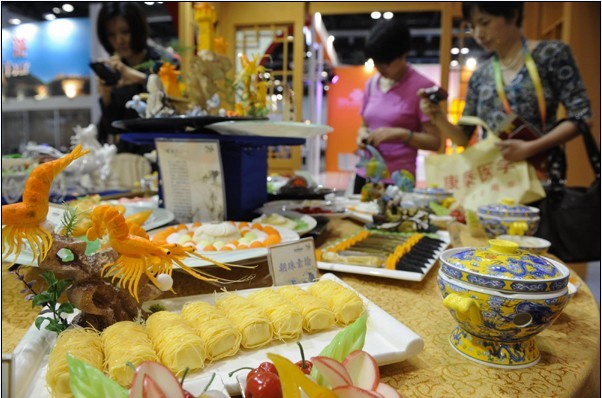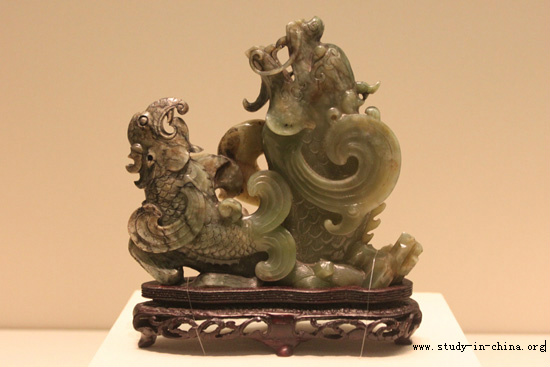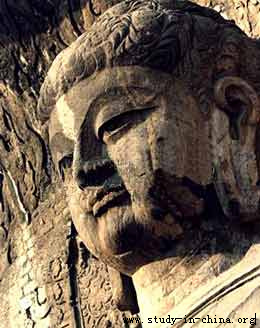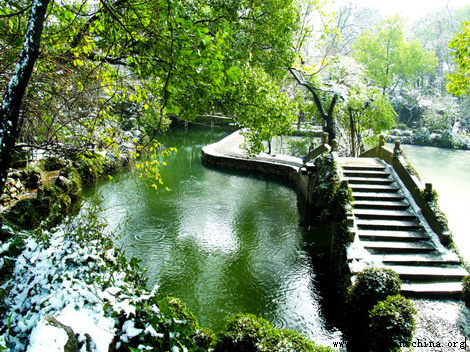As a Scotsman, I can consider myself part of an ethnic minority in the UK (Scots account for less than 10% of the total population) or at the very least, a minority within the EU and sitting here in Beijing I tend to hear a lot about China's ethnic diversity. Many of China's ethnic Han are very proud of their counties diversity. I have been informed by a lot of well traveled 'didao' (pure/authentic) Beijing locals of the fascinating and beautiful ethnic traditions that can be experienced on a visit to places like Guangxi and Yunnan province.
A utopian image of cultural diversity being accepted, celebrated and even providing jobs for people came bouncing into my mind recently when I read an advert in a UK newspaper that read; "Glaswegian Interpreters: Translation company seeks speakers of 'Glaswegian English' with knowledge of vocabulary, accent nuances, to meet interpreting needs of clients who find it an unexpected challenge." A Glaswegian is a term for the people who come from the city of Glasgow in Scotland and the dialect that its residents speak. I recall being at a concert in Glasgow when someone shouted to the singer David Ford, "on yersel son!" (Literally; go on yourself son! You could shout "go David/somebody" to similar effect) to which David, an Englishman responded, "I'm sorry, I only speak English". The words of encouragement from the Glaswegian were not understood by his fellow countryman - without knowledge of the dialect the meaning was lost to David. Now, in times of economic turmoil, this difference is apparently being seen as an economic opportunity. On a trip to Nanning in southern China I discover such a heterogeneous mix of people and cultures is a phenomenon that is already well understood and acknowledged in China.

A Thai Buddhist Temple

A Thai house pokes through the palm trees

Carrying firewood

Ethnic minority statues
In what is one of China's greenest cities a mere 160 km from Vietnam, you can find a colorful mix of cultures and customs in Nanning, Guangxi Zhuang Autonomous Region. This region in southern China is home to many of the countries 56 ethnic minorities and is famous for its diversity. Nanning is another bustling city in China, but the Chinese spoken here is a lot harder for me to understand. Many Putonghua or Mandarin (China's official language) words pronounced 'shi' in the north of China are pronounced 'si' in the south, other such differences include; 'de' becomes 'di' and 'le' becomes 'lei'…, and I haven't even started on the various local dialects and languages that are spoken in this region. To my knowledge Guangxi is host to a number of Sinitic languages including Mandarin, Ping, Cantonese and Hakka… and within those there are local dialect/language differences to the point of one village resident not being able to understand a neighboring village resident. But in China unlike in the west, the people have been brought together by the written language. In times gone by, if a Scotsman wrote to and Englishman in his native 'Scots English', the Englishman would have been at a loss to translate it. This has consequently resulted in the gradual decline of such regional languages in the UK in favor of the more dominant Standard English. However, in China although many minorities speak in different languages, many of them use the Chinese script - the characters represent the same meanings and can be universally understood, regardless of the pronunciation. Moreover, a lot of Han Chinese I saw visiting the area were extremely interested in learning some of the words spoken by the minority groups in the region, and the minorities were equally keen to share their knowledge.

A traditional home

A tropical paradise
Known as the "Green City" Nanning's tropical climate is famous throughout China, as is its quick development in tandem with China's economic surge. To add to the palm trees that give the place a distinctly tropical feel, the development of the Association of Southeast Asian Nations (ASEAN) member states' consulates in the city reiterate China's presence in the tropics of Southeast Asia - politics is at last catching up with geography. Impressive buildings to house ASEAN member states' consulates are appearing in a host of exotic forms, and to accompany them come the expected grandiose housing communities. In this first venture into Nanning I was becoming aware that the city is on the cusp of even greater diversity – international diversity. Nanning can already boast having some 35 recognized ethnic groups living within the city, both native to China and those originating out with her borders. With the imminent creation of the China-ASEAN Free Trade Area (CAFTA) and Nanning's role as a new political center there will surely be a surge in not only the city's international status but also in the amount of foreign nationals who live, work and visit the city. Personally I can see Nanning becoming something of a Southeast Asian, if not global cosmopolitan center.

Colorfully dressed girls prepare to sing to us

Girls in big hats selling cool rice wine
The city's greenery is epitomized by Qingxiu Mountain that dominates the city's southern skyline. Covered in lush forest, there are many hidden cultural gems in it's midst. Somewhere near the base of the hill there is a small park within a park. At its center are statues representing all the local ethnic minorities in Guangxi; from the Zhuang to the Vietnamese, they are all there. The statues depict the minorities in their traditional costumes; some wearing hats, some in long dresses, some in baggy trousers. Yet the grey statues made it difficult to appreciate the beautiful differences and colors the real outfits could, and that was emphasized when a young lady wearing traditional Zhuang minority dress appeared. The dress she wore was shamelessly bright pink with orange, blue and purple trimmings. The colors were even starker against the green of the forest; the variety of the vibrant colors reminded me of the colorful kilts worn in Scotland. It was great to see these traditional clothes still being worn in the midst of a quickly modernizing China. Further testament to diversity in China came at Yiling Cavern where groups of people in all manner of costume greeted us with song, music, dance, games and traditional rice wine. Unique songs rang out over the countryside, bright costumes dazzled and music filled the air as tourists jumped bamboo branches, hoisted buckets of wood and marveled at the dancers – albeit a show, but it was celebrating the ethnic diversity of China. Apparently each song and dance had a story but it was lost in translation… that said it was still a treat to behold, and just goes to show that variety really is the spice of life. The majority of the tourists in the group were Han Chinese (with me as the possible only exception) and they were all very eager to learn more and taste a bit of ethnic minority life. I think this is only a good thing, it may have only been a show and not the 'genuine article', but what would these performers be doing if it wasn't for their being different from the norm? They have learnt skills and customs that are so diverse and interesting that entertaining tourists has become a viable and sustainable way to make a living. This would not be possible if it were not for the Han Chinese interest and respect for minority culture, and it would not be possible if minority culture was being assimilated into traditional Han culture.

Jumping bamboo is one of many interesting minority traditions

Meeting a Zhuang minority girl
It's not just the clothes, songs and traditions that bring variety to the region, the cultural differences also spawn architecturally distinct styles. A Thai Buddhist temple sits on Qingxiu Mountain, accompanied by a traditional wooden Thai dwelling on raised stilts. The temple has all the things you would expect (except monks when we visited), but unlike the temples in Beijing the walls are white and the roof is a mix of orange, green and red. Despite incorporating various Buddhist traditions the temples architecture and decoration has its own unique Thai style, not normally associated with China. The Thai building on stilts and some traditional minority dwellings at Yiling Cavern were a quaint picture of the way some people still live in China and the wider Southeast Asia region. Guangxi Zhuang Autonomous Region has such a rich diversity, and it is quite clearly celebrated and cherished by all who experience it. Perhaps it's too early to call Nanning China's first 'melting pot' but with it's diverse past and international future it definitely has the potential to be.

Posing with the Vietnamese minority statues

Stunning countryside at Yiling Cavern
While in Nanning my aim had been to find out a little more about the different cultures that make up China, however, I still found myself being overwhelmed and entertained by the traditions and quirks of some of my Han friends. It just goes to show, whether a minority or majority culture, the world's people still have a lot to learn about each other.

Traditional minority music is played to greet us













 more
more


 more
more




 print
print  email
email  Favorite
Favorite  Transtlate
Transtlate 








